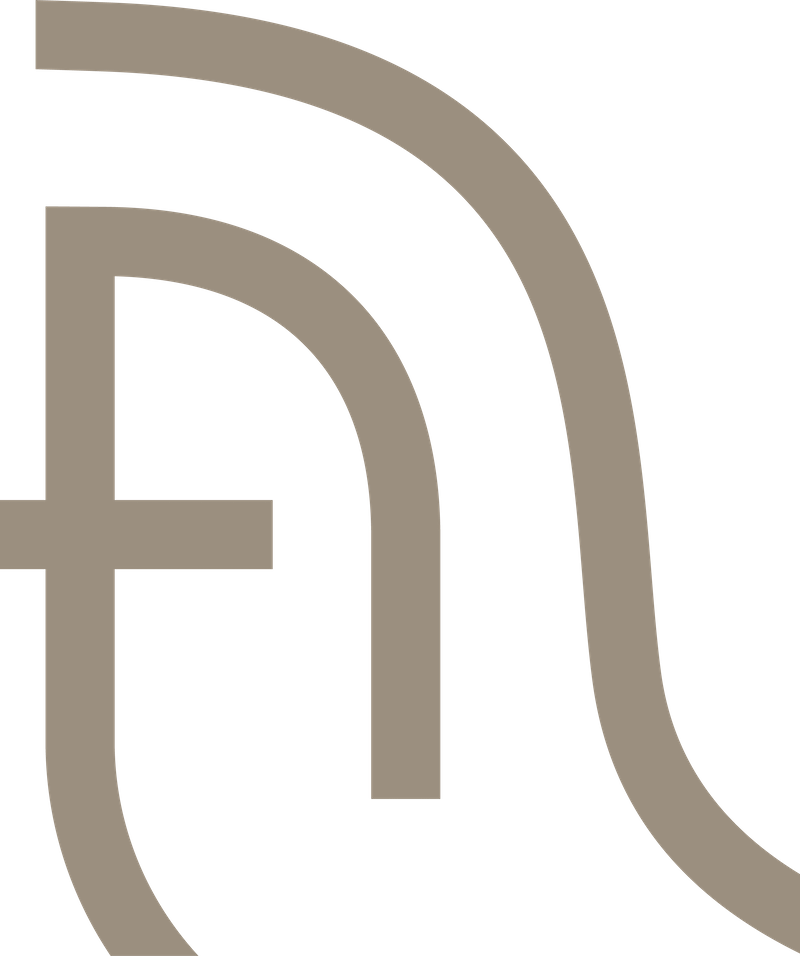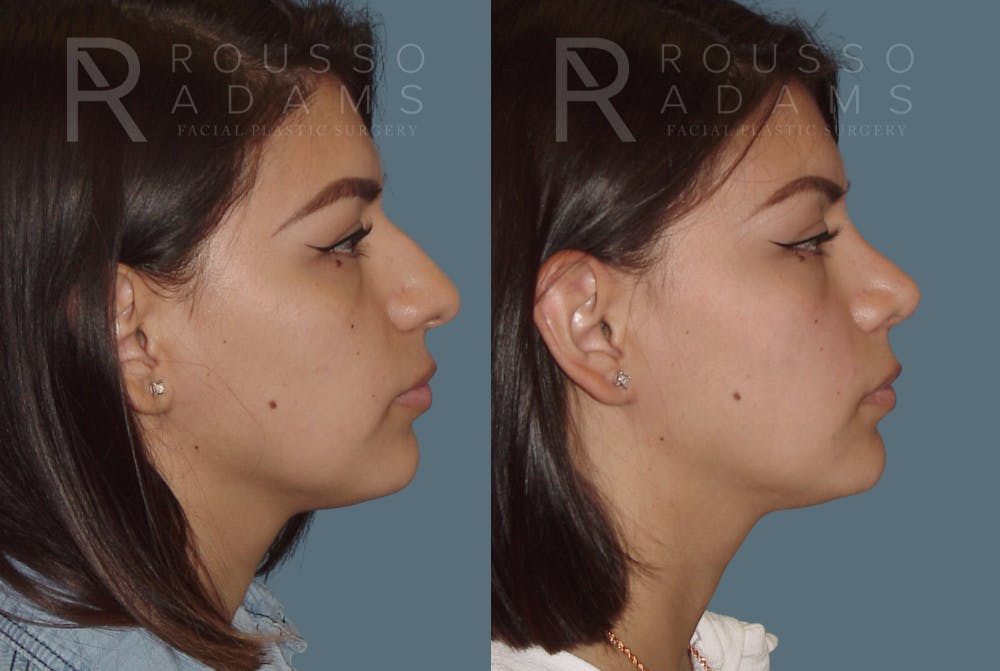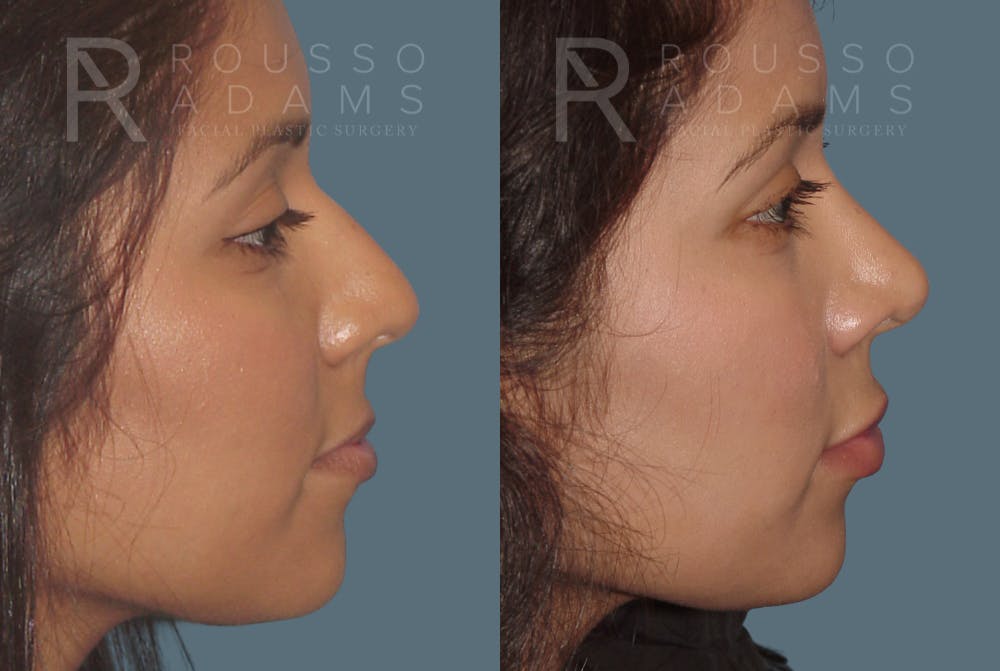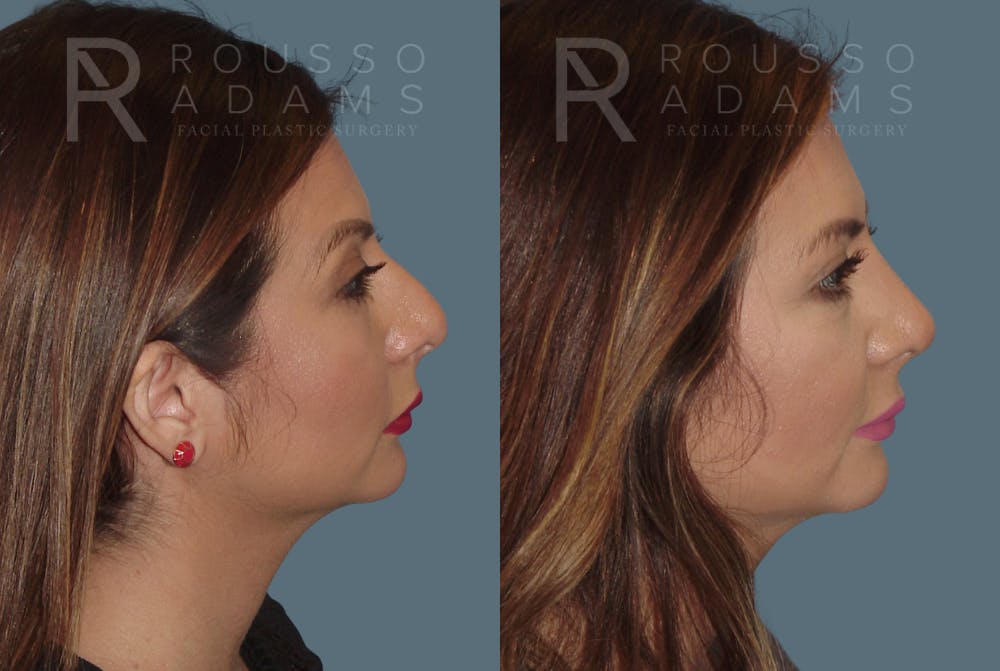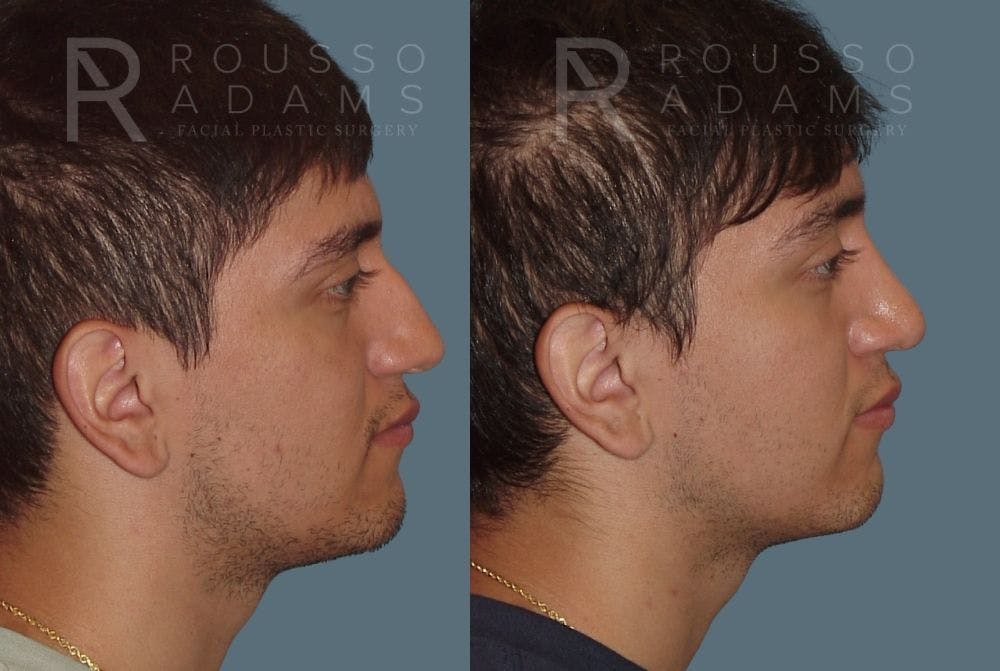Rhinoplasty, a “nose job” or “nose surgery,” which changes the shape and size of the nose or repairs a deviated septum to improve functionality, is one of the most popular cosmetic surgeries. At Rousso Adams, an ethnic rhinoplasty in Birmingham, AL, uses specific surgical planning and techniques to preserve cultural aesthetic features, providing desired nasal improvement with a personalized approach that respects and celebrates their identity.

What is ethnic rhinoplasty?
While rhinoplasty has long been available, surgeons developed best practices around the general facial shapes and aesthetic standards of Caucasians. At best, the results were templated and standard issue; at worst, when performed incorrectly, rhinoplasty produced disproportionate results for non-white patients that were:
- Overly upturned
- Pinched
- Vertically shortened
- “Scooped”
- Too small for the surrounding facial features
Ethnic Rhinoplasty Before & After Photos
Additionally, Caucasian rhinoplasty guidelines can cause breathing issues and an increased risk of needing multiple or revisional surgeries for African-American, Asian, Native American, and Middle Eastern patients.
Ethnic rhinoplasty broadly describes nasal surgery performed for non-Caucasian patients, often to improve appearance or function while preserving the characteristic features of their heritage.
Some examples of these characteristics include the following:
- Nostril size and shape
- Nasal width
- Skin thickness and elasticity
- Cartilage strength and thickness
- Bridge height
Please schedule a consultation for an ethnic rhinoplasty in Birmingham, AL.
Types of ethnic rhinoplasty procedures
Rhinoplasty can be categorized into the following procedures:
Augmentation: Augmentation is standard across all ethnicities, subtly rearranging the cartilage to balance the nose and create the illusion of a narrower tip. Alternatively, pointing the tip of the nose up or down can increase or shorten its distance from the lip, balancing out a prominent bridge.
Revision Rhinoplasty: Revisional ethnic rhinoplasty corrects or refines a past procedure that produced scar tissue, increasing the complexity of the rhinoplasty.
Reduction: To bring protruding features closer to the rest of the face, cartilage and bone are removed from the underlying structure, decreasing the physical size of the nose. This is more common in Middle Eastern patients.
Projection: Grafting cartilage from the septum or ribs to the underlying nasal structure in flatter areas of the nose increases its physical size. This gives a narrower, more elegant, balanced appearance and is more common in African-American, Asian, Pacific Islander, Native American, and Hispanic patients.
Our surgeons will choose one of the following two rhinoplasty techniques based on what will provide the most natural results:
CLOSED RHINOPLASTY
Dr. Adams or Dr. Rousso begins by hiding incisions inside the nose to minimize scarring, through which the structure of the nose is adjusted according to your desires. A splint is then applied to help your nose maintain its shape. Upon completion, a dissolvable suture is also used to stabilize the septum to avoid nasal packing.
A closed rhinoplasty is best for minor adjustments and can sometimes limit what is possible with rhinoplasty.
OPEN RHINOPLASTY
The procedure begins with a small incision at the base of the nose on the strip of tissue separating the nostrils, allowing Dr. Rousso or Dr. Adams to open the nose and freely adjust the nasal tissues and structures. This incision may leave a small, inconspicuous scar at the base of the nose. Upon completion, a splint will stabilize your nose in its new shape, while we will stabilize the septum with a dissolvable suture to avoid nasal packing.
Open rhinoplasty is best for:
- Significant adjustments
- Corrections
- A second rhinoplasty
- Severe asymmetries

Am I a good candidate for ethnic rhinoplasty?
If you are unhappy with your nose but do not want to lose your defining features and are in good health, you may be a good candidate for ethnic rhinoplasty.
During your consultation, Dr. Rousso or Dr. Adams will consider your aesthetic goals and concerns to determine whether ethnic rhinoplasty can accomplish what you desire. To best preserve your ethnic features while meeting your surgical goals, they will also consider the following:
- What parts of your nose dissatisfy you
- Whether they can change those parts without unnatural or homogenous results
- How best to give you a naturally beautiful, “ethnically appropriate” nose you’ll be happy with
Ethnic rhinoplasty recovery and results
Many patients feel that recovery from an ethnic rhinoplasty with Dr. Rousso and Dr. Adams is more manageable than anticipated. Some bleeding may occur during the first few days, and most of the swelling and bruising after rhinoplasty resolves within two weeks.
By the end of the first week, the splint is removed. Two weeks after surgery, you can return to light activities while expecting a feeling of stuffiness in the nose for several weeks.
Refrain from contact sports or extreme physical activity for six weeks to avoid the risk of injury to the nose.
Early results are visible when most of the swelling subsides about two weeks after the operation. Slight changes will occur as the internal nasal structures adjust and swelling continues to diminish; your results will be final by one year after the rhinoplasty. Best of all, these results last a lifetime.
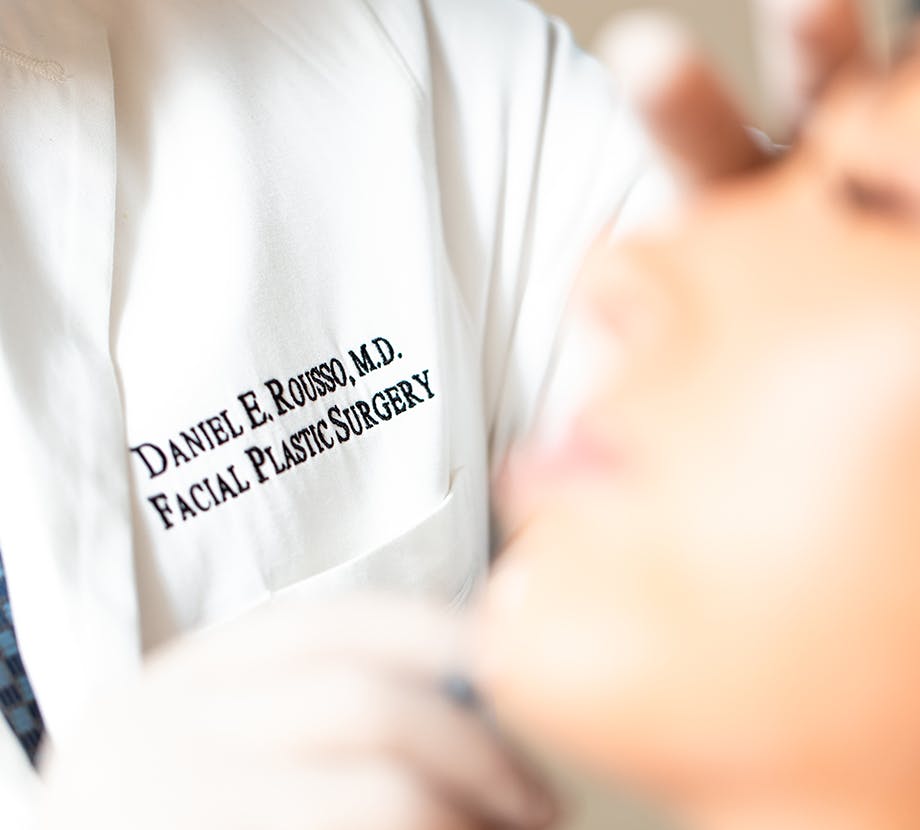
Why choose Rousso Adams Facial Plastic Surgery Clinic for ethnic rhinoplasty in Alabama?
Dr. Rousso and Dr. Adams will never give you an artificial result; your results will always look subtle, natural, and inherent while respecting and highlighting your favorite ethnic features. Our facility uses state-of-the-art medical equipment, and many of our staff have been with Dr. Rousso for over two decades. We can help you arrange travel and hotel accommodations, lab appointments, sitters, aftercare, and many other services from start to finish.
To learn more, contact us today and schedule a consultation for arguably the best ethnic rhinoplasty Birmingham, AL, has to offer.


